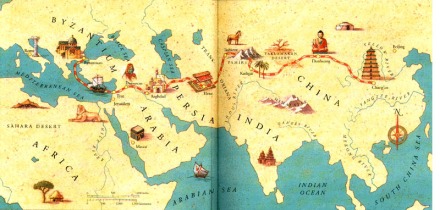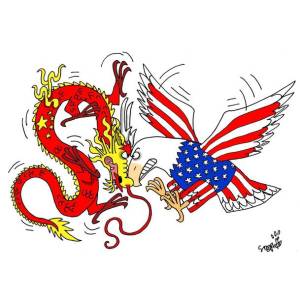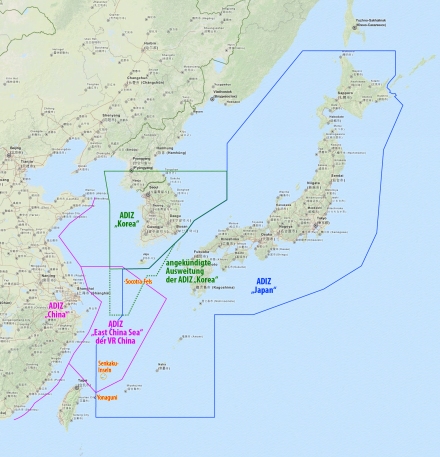Die Ölwaffe – Ein Wirtschaftskrieg soll Russland, Iran und …
ISW-Sozial-ökologische Wirtschaftsforschung
Von Fred Schmid
 Er fällt und fällt. – der Ölpreis…Binnen fünf Monaten ein Preisverfall von über 30 Prozent…Was für Autofahrer niedrigere Tankrechnungen und für Privathaushalte billigere Heizkosten bedeutet, kommt eine Reihe von Staatshaushalten teuer zu stehen; vor allem von Staaten, die ihre Haushalte weitgehend aus dem Ölverkauf finanzieren, wie Russland, Venezuela, Iran, Irak, Nigeria etc…
Er fällt und fällt. – der Ölpreis…Binnen fünf Monaten ein Preisverfall von über 30 Prozent…Was für Autofahrer niedrigere Tankrechnungen und für Privathaushalte billigere Heizkosten bedeutet, kommt eine Reihe von Staatshaushalten teuer zu stehen; vor allem von Staaten, die ihre Haushalte weitgehend aus dem Ölverkauf finanzieren, wie Russland, Venezuela, Iran, Irak, Nigeria etc…
Was aber sind die Ursachen für den Absturz des Ölpreises?
Offenbar gerät er sowohl von der Angebots- als auch von der Nachfrageseite unter Druck…
- Die Konjunkturdaten aus Europa werden eher schlechter als besser – Stagnation jetzt auch in Deutschland, Rezession und Nullwachstum in der restlichen Eurozone. Bei Großbritannien besteht die Gefahr, dass der Aufschwung vorbei ist und das Land in die Rezession abgleitet. Japan ist bereits in diese gestürzt. Verlangsamte Wachstumsraten auch in den BRICS– und übrigen Schwellenländern – und beginnende Wirtschaftskrise in Russland, der drittgrößten BRICS-Ökonomie. Der Ölverbrauch stagniert also.
- Zum anderen: “Es gibt ein steigendes Angebot an den Ölmärkten, das beeinflusst die Preise derzeit stärker als die Entwicklung der Nachfrage”, sagt Carsten Fritsch, Rohstoffanalyst der Commerzbank. Vor allem die US-amerikanische Ölproduktion nimmt seit Jahren ungebrochen zu, in erster Linie wegen des Fracking-Booms. Diese unkonventionelle Fördermethode, bei der unter hohem Druck ein Wasser-Chemikalien-Gemisch in die Gesteinsschichten verpresst und damit das Öl herausgedrückt wird, hat die Ölproduktion stark ansteigen und die USA zum größten Ölproduzenten der Welt werden lassen…
In früheren Zeiten wäre die Entscheidung der OPEC in solchen Situationen klar gewesen: Mit einer Kürzung der Förderquoten der einzelnen Mitgliedsstaaten hätte das Angebots-Kartell die Preise wieder nach oben getrieben. Diesmal, beim Halbjahrestreffen in der Wiener OPEC- Zentrale war der Klub jedoch in dieser Frage gespalten.
- Die ärmeren Mitglieder der 12er-Gruppe setzten sich für eine Drosselung des Angebots ein, um mit höheren Preisen Mehreinnahmen zu erzielen: Venezuela, Ecuador, Nigeria, Angola und der Iran. Auch der Irak und Libyen wären an einem höheren Ölpreis interessiert, um den Wiederaufbau ihrer kriegszerstörten Länder bezahlen zu können. Sie alle fürchten um den Ausgleich ihrer Haushalte, deren Einnahmen mit höheren Preisvorstellungen aufgestellt wurden…Venezuela machte sich zum Anführer der “armen Verwandten” der OPEC. Rafael Ramirez, Öl- und Außenminister in einer Person, war ständig unterwegs, um die anderen OPEC-Staaten zum teilweisen Zudrehen der Ölhähne zu bewegen. Das Nicht-OPEC-Mitglied Russland bot an, die eigene Förderung zurückzufahren, sollte sich die OPEC zur Kürzung entschließen. Die Mühe von Ramirez war vergebens.
- Sein Antrag stieß auf die geschlossene Abwehrfront der reichen Golfstaaten, Kuweit, Katar, Vereinigte Arabische Emirate, allen voran aber Saudi-Arabien. Das Scheichtum ist der entscheidende Machtfaktor im Öl-Kartell, ohne oder gar gegen ihn läuft nichts.
Saudi-Arabien produziert rund 30 Prozent des gesamten OPEC-Öls, hat erhebliche Reserven und vor allem die Schlüsselposition eines Swing Producers inne; d.h. es hat erhebliche ungenutzte Produktionskapazitäten, die es jederzeit hochfahren oder reduzieren kann. Selbst wenn Venezuela, Iran und Russland quasi im Alleingang die Fördermengen drosseln würden, könnte das Saudi-Arabien (plus die anderen Golfstaaten) jederzeit konterkarieren, indem es seine Reservekapazitäten einschaltet… Finanzielle Nachteile hat auch Saudi-Arabien selbst… Doch bei einem Schatzberg von 740 Milliarden Petrodollars kann es etwaige Defizite eine längere Zeit durchstehen. Hinzu kommen noch milliardenschwere Finanzinvestitionen arabischer Investmentgesellschaften (des Herrscherhauses in Riad) auf EU- und USA-Finanzmärkten. Und schließlich haben die Golfstaaten mit zehn und weniger Dollar je Barrel die niedrigsten Produktionskosten und damit die höchste Ölrente. So gewährt Saudi-Arabien den Amerikanern regelmäßig immense Preisnachlässe, um sich seinen Marktanteil auf den US-Markt zu sichern. Es muss den Saudis bei ihrem Veto zur Förderreduzierung also um mehr gehen, als um milliardenschwere Ölprofite.
Seit dem No! der OPEC zu Reduzierung des Ölangebots, wird in der Wirtschaftspresse viel spekuliert über die Hintergründe und insbesondere der Motive Saudi-Arabiens… Man kommt dann sehr schnell zu dem Ergebnis, dass es hier um imperiale Machtprojektionen geht, dass hier die Fronten für einen globalen Wirtschafts- und Ölkrieg errichtet werden oder wie es jüngst der Kolumnist und Kommentator der New York Times, Thomas L. Friedman, formulierte: “Bilde ich mir das nur ein, oder bahnt sich ein globaler Ölkrieg zwischen den USA und Saudi-Arabien auf der einen Seite und Russland und Iran auf der anderen an?” Mit der Ölwaffe werden offenbar die gegnerischen Staaten Iran, Russland und Venezuela ins Visier genommen. Es sind, einschließlich Syrien, das mit seiner relativ kleinen Ölproduktion ebenfalls vom niedrigen Preis betroffen ist, die gegenwärtigen Hauptfeinde der beiden Mächte. Das trifft im Falle Saudi-Arabiens auch für das geografisch weit entfernte Venezuela zu: Das Land ist in der OPEC neben dem Iran der Gegenspieler des Scheichtums und der Koordinator der Front der Nicht-Golf-OPEC-Mitglieder in Lateinamerika und Afrika. Und Russland ist der Hauptkonkurrent des Scheichtums auf dem globalen Ölmarkt und zudem eine Art Schutzpatron für Syrien und Iran.
Diese “Schurkenstaaten” Iran, Venezuela und Russland zu schwächen oder gar einen Regime Change zu erreichen, ist ein weitgehend kongruentes Interesse der Öl-Supermacht Saudi-Arabien und der Militär- und Geldsupermacht USA. Denn ein niedriger Ölpreis bringt diese Staaten etatplanerisch in die Bredouille, gefährdet ihre teilweise ehrgeizigen Sozial- und Entwicklungsprogramme…
Dabei bedarf es gar keiner verschwörerischen Absprache zwischen Saudi-Arabien und den USA, obwohl es das in der Vergangenheit auch schon gegeben hat. Saudi-Arabien kann mit seiner Position in der OPEC ein solches Vorgehen sogar im Alleingang erreichen; es muss nur eine Senkung der Förderquoten verhindern, wozu es die Macht hat…
Hauptleidtragender dieser kriegerischen Politik ist zweifelsohne Russland. Für das Land bedeutet der Öl-Krieg gewissermaßen eine zweite Front, der es sich mit dem vom Westen aufgezwungenen Handelskrieg gegenübersieht. Möglicherweise mit einschneidenderen Auswirkungen als die gegen das Land verhängten Sanktionen… Bemerkenswert ist schon, dass sich mit dem Inkrafttreten der Sanktionen der Ölpreisverfall beschleunigte. Der russische Haushalt basiert zu 45 Prozent auf dem Rohstoffgeschäft. Er ist zu einem Ölpreis von 96 Dollar kalkuliert, d.h. erst bei diesem Preis ausgeglichen. Der Verkauf von Öl und Gas macht etwa zwei Drittel der russischen Exporterlöse aus…
Die Auswirkungen auf den Staatshaushalt sind allerdings nicht so gravierend. Grund: der parallel abstürzende Rubelkurs. Öl wird in Dollar abgerechnet. Die Exporteure – natürlich auch die staatlichen – bekommen jetzt 48 statt wie bisher 37 Rubel je Greenback . Gleichzeitig steigen jedoch infolge der Abwertung die Importpreise und damit die Inflation.
Ölpreisverfall und Sanktionen kosten Russland nach eigenen Angaben etwa 140 Milliarden Dollar jährlich: fast sieben Prozent des BIP. “Wir verlieren 40 Milliarden Dollar, die den Sanktionen geschuldet sind und weitere 90 bis 100 Milliarden Dollar durch den 30- prozentigen Ölpreisverfall”, sagte der russische Finanzminister Anton Silanov in Moskau… (china-daily, 25.11.14).
“Putin erlebt zum ersten Mal in seiner seit 2000 laufenden Amtszeit fallende Reallöhne”, schreibt das Handelsblatt (28.11.14). Auch seine im Wahlkampf zugesagten Sozialleistungen sind nicht mehr zu finanzieren. Das alles zielt auf Unzufriedenheit in der Bevölkerung und schürt soziale Unruhen. Es zielt auf ein Ende des Regimes Putin.
Nach Ansicht des Russischen Instituts für Strategische Studien (RISS), dessen Hauptaufgabe es ist, politische Studien für den Kreml zu erstellen, ist es “das Minimalziel des Gegners in diesem Wirtschaftskrieg, Wladimir Putin durch eine für den Westen annehmbare Figur aus dem heutigen politischen Establishments Russlands zu ersetzten” (zit. nach FAZ, 17.10.14). Infrage käme hier der so genannte “Wirtschaftsblock” in der Regierung: die für die Wirtschaft zuständigen Ministerien werden alle von neoliberalen, westlich orientierten Fachleuten geführt (vgl. FAZ, 17.10.14).
In vielen Berichten wird in den Vordergrund gestellt, dass Saudi-Arabien mit seinem Preiskrieg die Fracking-Konkurrenz ausschalten will, um seine Dominanz auf dem Welt-Öl-Markt sicherzustellen. Das ist nicht das primäre Ziel. Zumindest vorübergehend braucht Saudi-Arabien (und die USA) das Überangebot, um seine (ihre) politischen Ziele zu realisieren… Eine große Marktbereinigung oder gar ein Kahlschlag sind nicht zu befürchten.
Washington hingegen kommt der niedrige Ölpreis sehr gelegen. Nicht nur wegen der Schwächung der politischen Gegner, die nun allesamt in der Ölpreisfalle sitzen. Die USA haben von allen Industrienationen das ölintensivste Verkehrs- und Transportsystem, sowohl im privaten als auch im wirtschaftlichen Bereich. Da schlägt der fallende Ölpreis entsprechend zu Buche, auch im Bereich der Industrieproduktion. Laut Barclays (internationales Finanzunternehmen) erhöht sich das US-Wirtschaftswachstum durch den Ölpreisverfall allein im vierten Quartal um 0,5 Prozentpunkte. Insgesamt erhofft man sich durch das billige Öl eine Beschleunigung des Wirtschaftswachstums, was dann die Pleiten einiger Fracking-Unternehmen nicht mehr ins Gewicht fallen lässt. Entscheidend ist für die US-Politik, dass die gegnerischen Ölmächte Pleite gehen.
zuerst erschienen bei:
http://www.isw-muenchen.de/download/oelwaffe-fs-20141202.pdf
Gefällt mir Wird geladen …
 Many Thais have reacted with fury to what is being widely seen as a case of the US meddling in Thai politics. The incident brings to mind „The Ugly American“, a film made more than 50 years ago during the cold war. It portrayed America’s arrogant behaviour towards a third-world country.
Many Thais have reacted with fury to what is being widely seen as a case of the US meddling in Thai politics. The incident brings to mind „The Ugly American“, a film made more than 50 years ago during the cold war. It portrayed America’s arrogant behaviour towards a third-world country.














